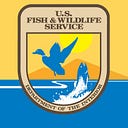Return of the tern
If you build it, they will come… eventually
By Sandy Vissman, San Clemente Island Coordinator and Jessica D’Ambrosio, public affairs specialist, Carlsbad FWO

The California least tern (Sterna antillarum browni) faces many hurdles for successful nesting and chick production, and this year was no exception. A strong red tide, predators and recreational trespassing affected least terns at sites throughout California. Despite all odds, about 10–15 adult tern pairs, along with their 10 offspring, were observed at San Dieguito Lagoon this past spring, marking the first ever nesting success at two human-made sites.

The tiny, federally endangered bird returns to California each April to breed, nesting directly on the sand at river mouths and coastal strands, from the U.S./Mexico border to the San Francisco Bay. However, loss of habitat and historical nesting sites due to development and recreational use led the California least tern to be included on the first list of federally endangered and threatened wildlife under the Endangered Species Act in 1973.

In 1985, the U.S. Fish and Wildlife Service prepared a recovery plan and partnered with multiple agencies and organizations to reverse population decline and conserve remaining habitat. Recovery efforts included creating human-made nesting sites to compensate for impacted habitat. The sites, made up of carefully designed sandy substrate islands, are usually built in the immediate vicinity of known nesting areas. Once established, these areas are monitored and managed for predators such as opossums, skunks, rats, crows, gulls and raptors.

Establishment of a nesting colony at San Dieguito Lagoon is an important step toward recovery of the California least tern, yet it will take continued effort to protect the areas and maintain conditions successful for nesting.
How can you help?
· Respect areas roped or fenced off to avoid nests and disturbing resting terns.
· Adhere to posted signage regarding leashed dogs and recreation use.
· Pick up food and trash, as trash attracts predators which are very good at finding eggs and chicks.

A special thanks to Dr. Brian Foster of Volant Research Enterprises and Joe Baima of the U.S. Department of Agriculture Animal and Plant Health Inspection Service Wildlife Services whose outstanding site monitoring and management efforts facilitated this historic nesting success.
